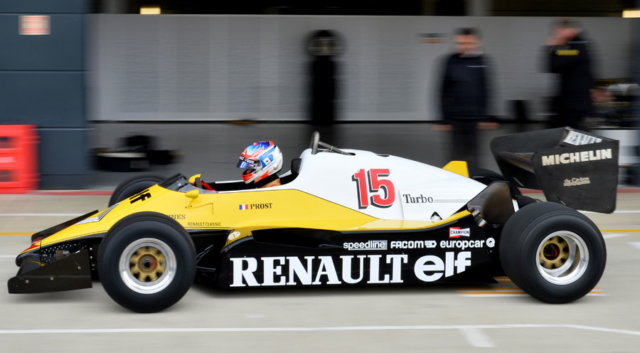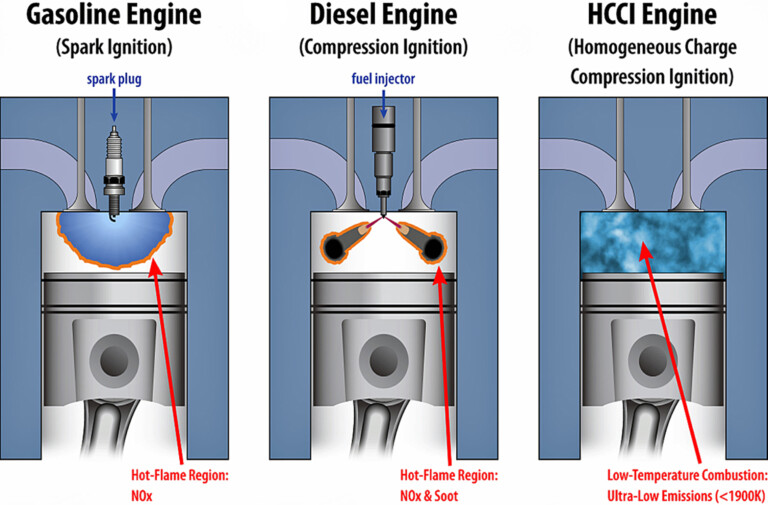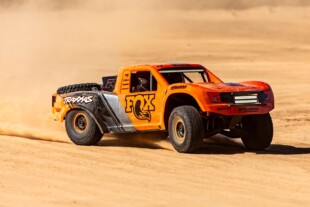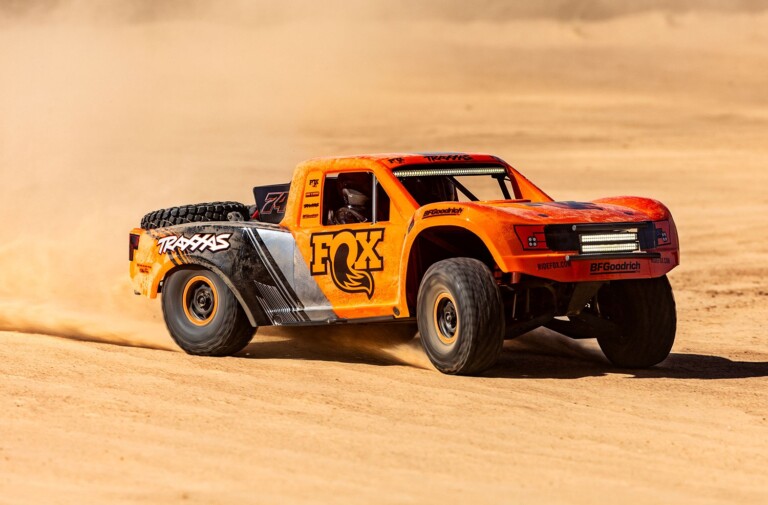Though the current F1 fleet sport a turbocharged, 1.6-liter V6 motor, they’re a far cry from the absurdity of early and mid-eighties turbo cars. Nowadays, the electric motor helps generate a linear power delivery, which is better harnessed by modern tires and a paddle-shifted gearbox. Thirty years ago, the turbo cars were more violent, more prone to self-destruct, capable of shredding gears without any real provocation, and much, much smaller. Observing the front nose of this Renault RE40, the driver’s feet end in front of the front axle! It’s no wonder that these cars were treated with a huge amount of respect.
To help bridge the gap from a young man’s perspective is the seasoned veteran and commentator Allan McNish. While the Scot has been around the paddock for nearly thirty years, his career didn’t end until 2013, when he had been crowned a LeMans winner for the third time. As a man with such clout in the racing world, his opinion goes far, and being a Scot, he’s never far from wearing his heart on his sleeve. As he recalls, the early turbo years hold a special place in his heart since they coincided with his formative racing years.
Romain Grosjean, the current driver for Haas F1, began his racing well into the nineties, and by then the turbo cars had been somewhat forgotten. Now, having a turbocharged engine in his own racing car, his opinions on the matter become all the more interesting, and raise several questions. How far has the racing car come in over a quarter-century? More importantly, does the turbo represent what it did three decades ago?
Somewhat comically, the lanky Grosjean finds operating a manual gearbox a bit challenging. With a slurry of French profanity, the young man gets to grips with the laggy, mule kick-to-the-kidneys power delivery from the 1.5-liter turbo. The EF1 engine, in race trim, made about 650 horsepower at 12,000 rpm, and somewhere around 880 horsepower in qualifying trim. Unfortunately, the car was dogged with reliability problems, even with the mechanically-sympathetic Alain Prost at the helm. The culprit was the KKK turbochargers, which broke often enough to rob Prost of the title that year.

The EF1 was an engine that performed best on fast circuits, but was dogged by a poor choice in turbochargers.
Additionally, the RE40 was the first F1 car from Renault to sport an entirely carbon fiber chassis. It also utilized a “crash box” in the front of a car, which facilitated quick rebuilds. However, it was still an old-school design, with the axle behind the driver’s feet. A series of leg-crushing accidents over the ensuing years would change that design, however.
Old school technology, which for the times was revolutionary but still very rudimentary by today’s standards, made these cars a handful. That power delivery required drivers to anticipate the turbo spooling and would therefore have to floor the throttle directly after braking to raise engine revs faster, hoping that the car would be straight by the time the boost kicked in. This made tire wear incredibly important, since wheelspin was always a millimeter of throttle travel away. Prost excelled in this era because of his smooth style, his neat lines, and his unwillingness the abuse the fragile cars. Fragile they were, but simultaneously jaw-dropping things of beauty and savage performance.






















